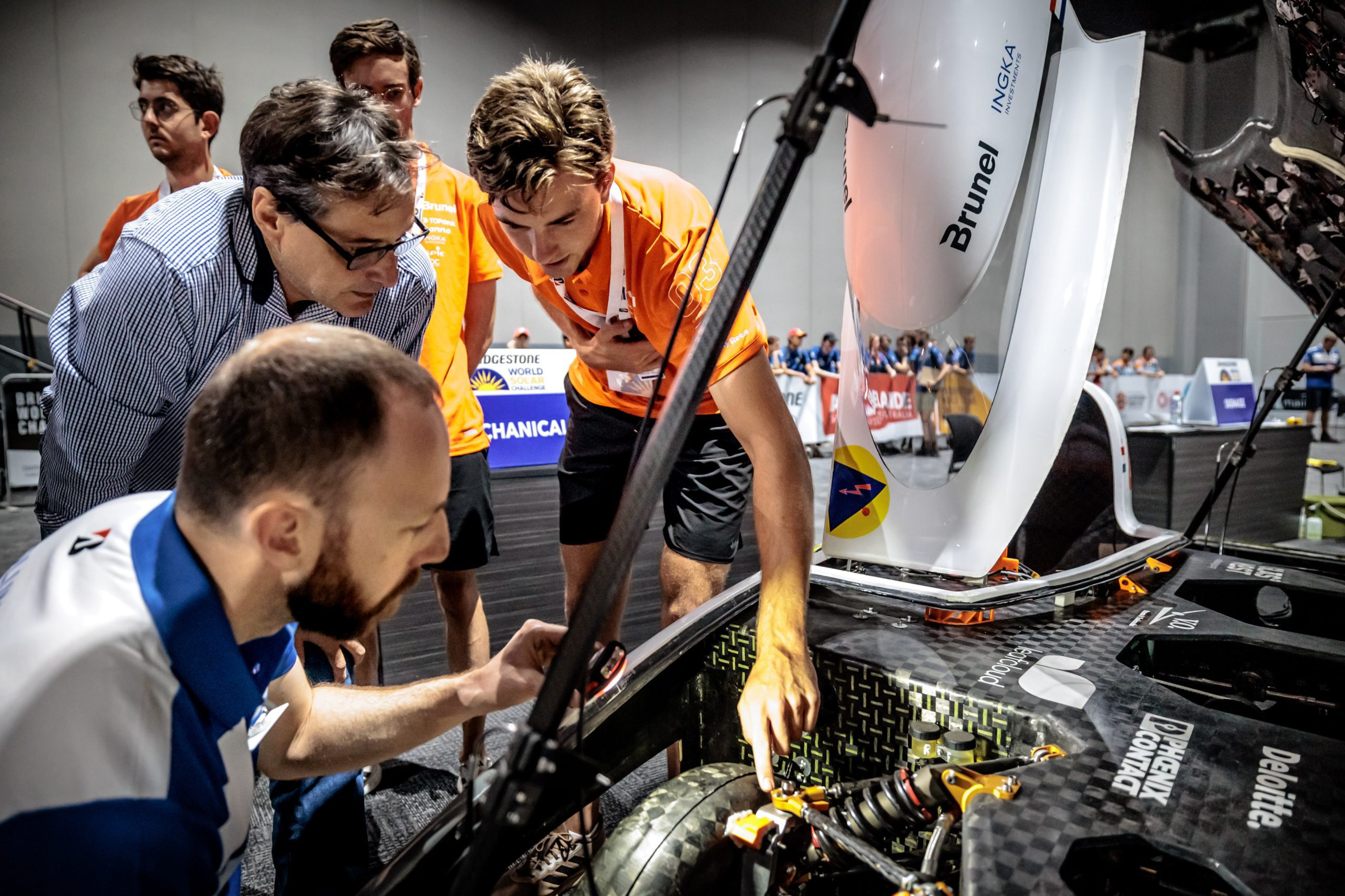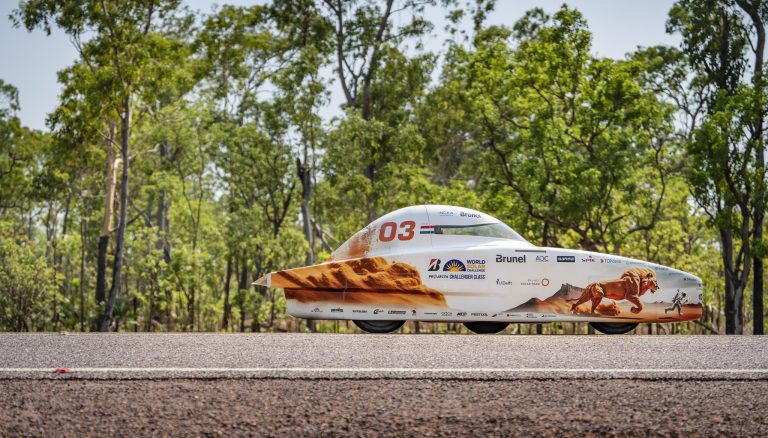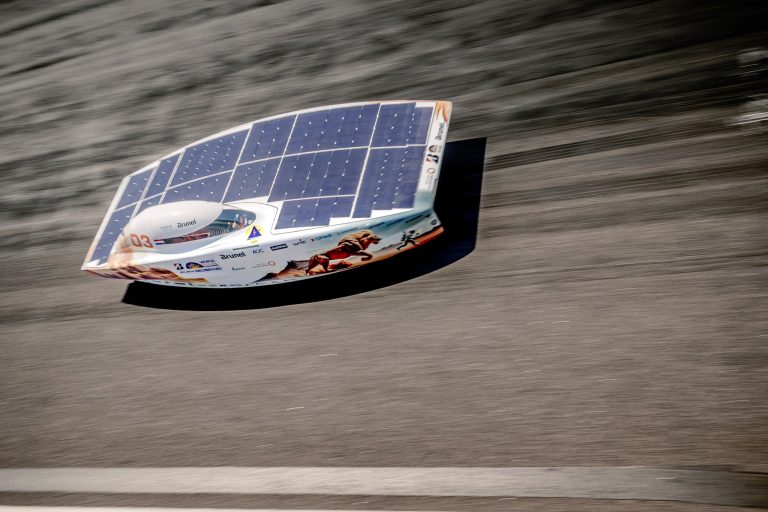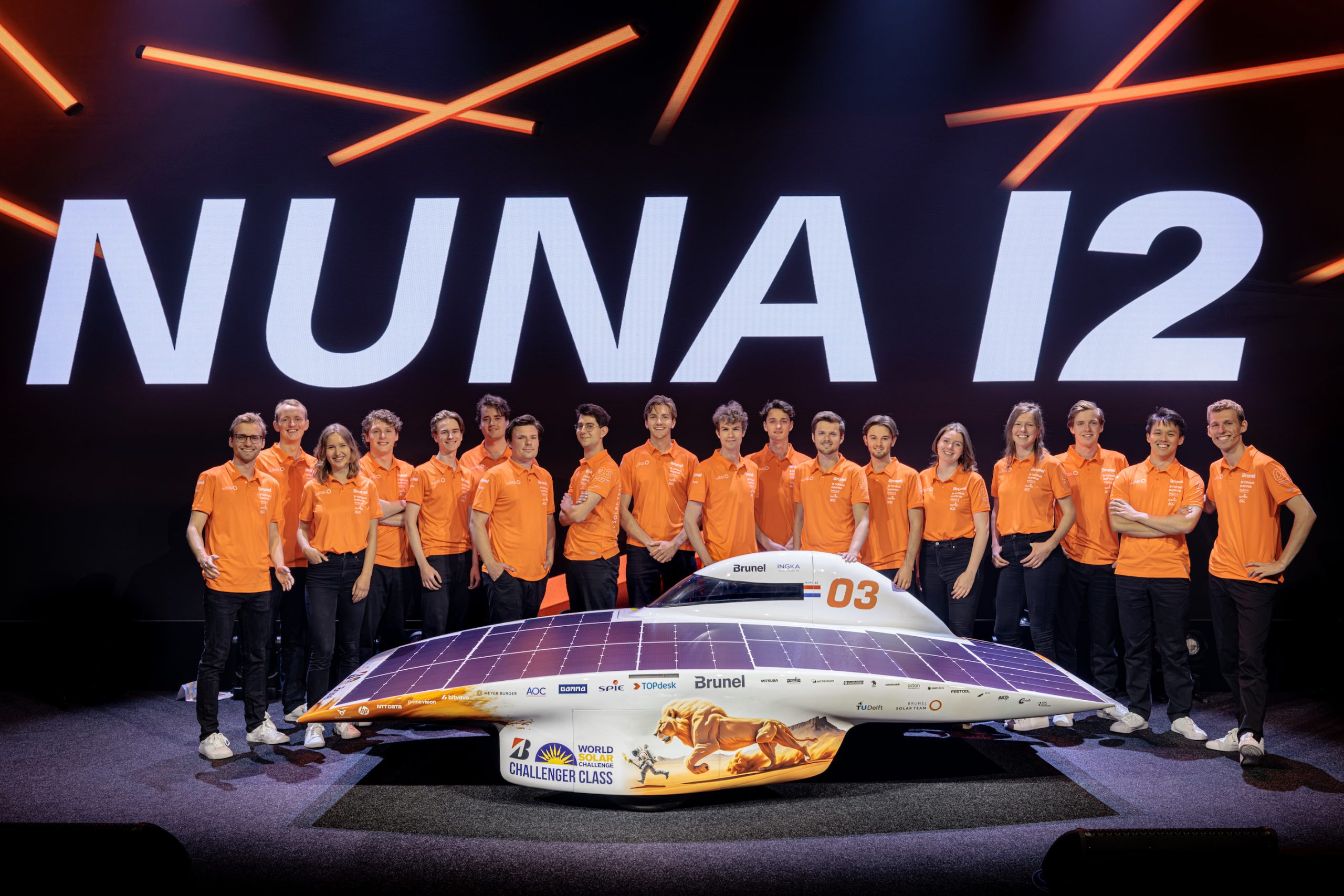The Brunel Solar Team is prepping for the world solar racing championship, competition seems stiff as ever. Delta spoke to Team Manager Lennert Hessels for a quick debriefing.
Lennert Hessels (far-right): “At the start we were one of the few professional teams, now every team is getting more and more professional.” (Photo: Hans-Peter van Velthoven)
English only
On Sunday 22 October, the Brunel Solar Team (BST), a group of enthusiastic TU Delft students, will be burning rubber at the Bridgestone World Solar Challenge (WSC). This is a five day solar race across Australia that is held every two years. Over 50 prestigious teams – mostly from educational institutions – race their self-built solar powered vehicles over a 3,000 km route that stretches from Darwin in the north, to Adelaide in the south. They drive every day from 08:00 to 17:00, and then set up camp for the night. BST’s car, named Nuna (now in its 12 iteration), is currently preparing for the race, and after an unfortunate ending to their last visit down under – where their hard work literally went up in flames during the winning stretch – they are eager to prove themselves by taking back the World Champion title from their Belgian competitors.
 The melted corpse of the Nuna X, on the side of the road near Adelaide. (Photo: BST)
The melted corpse of the Nuna X, on the side of the road near Adelaide. (Photo: BST)Despite this poor last showing, the team is no stranger to the podium. When the team was founded in 2001, their prospective coach, Wubbo Ockels, the first Dutch astronaut and a professor at TU Delft, told the students “I will only participate if we are going to win.” And win they did, becoming the first debut team to ever win the WSC. They have racked up seven WSC first place wins since then.
It’s been four years since they raced in the WSC as the one scheduled for 2021 was cancelled due to the Covid-19 pandemic. This year’s Team Manager, Lennert Hessels, has some insights to share from halfway across the world. Now that they are at the same testing circuit as other competitors, they are finding out about the stiff competition, explains Lennert. “We thought it would be a very close race between a couple teams, but now seeing the directions everyone went in, it feels like it is going to be a crapshoot.” Many of the other teams even dwarf the TU Delft favourites in size.
 The Nuna vehicle being scrutinised by competition officials. (Photo: Hans-Peter van Velthoven)
The Nuna vehicle being scrutinised by competition officials. (Photo: Hans-Peter van Velthoven)Testing, testing
Upon arriving in Australia, half the team drove the route of the challenge to log everything. During this 3,000 km drive, they checked control stops, potential camping locations, and even timed the traffic lights. With competition so fierce, even a few minutes sitting at a traffic light can make a difference.
Because Nuna was designed in the Netherlands, there hadn’t been a chance to test it yet in the environment it was designed for. “It was hard setting up something for a place where we weren’t. The asphalt, wind, and climate is very different here.” Thankfully their tests are showing promising results. “We designed our car so that we can use side winds to make the car ‘sail’ in a sense. According to our tests, this makes the car more efficient and it indeed works as intended.”
 The Nuna 12 in Darwin, driving by a picturesque grove of Eucalyptus. (Photo: Hans-Pieter van Velthoven)
The Nuna 12 in Darwin, driving by a picturesque grove of Eucalyptus. (Photo: Hans-Pieter van Velthoven)Some new things under the sun
The Nuna 11 weighed only 140 kg, and was able to achieve a top speed of 135 km/h, with an average speed of 67 km/h. And the new car is a step up from its predecessor in several ways. It is lighter – recently weighing in at 138 kg – narrower and, most importantly, faster. The battery is nearly 50% more energy-dense, due to the use of pouch cells and ‘silicon nanowires’. This battery was difficult to manufacture but hopefully the effort will pay off. The solar panel consists of multiple layers of materials that reflect sunlight into the cells, thereby increasing efficiency. By partially overlapping the cells, they can generate even more energy per square metre.
Another innovation is the use of bypass diodes in the solar cell array. Normally, an array is only as efficient as the least efficient cell in the system because of the way they are linked electrically. Bypass diodes allow for cells that are in the shade to be bypassed, rather than decreasing the efficiency of the whole array. Yet another new feature is the use of a ‘sharkskin’-like coating of decals which in tandem with the car’s aerodynamic shape allows it to experience the total air resistance of a single side-view mirror of a normal car.
With these new tricks up their collective sleeve, will eighteen plucky TU Delft students be able to pull off a win this year? As the talk with Lennert comes to a close, all that’s left is to wish him well. I put on my best Aussie accent and say “good luck down under, mate” he chuckles and offers his thanks.
 The Nuna 12 burning rubber and soaking up some vertical rays in Australia. (Photo: Lightatwork.nl)
The Nuna 12 burning rubber and soaking up some vertical rays in Australia. (Photo: Lightatwork.nl)
- If you’d like to know more, BST has a regularly updated website (In English and Dutch) where they will also be live-blogging the race.
- You can also follow them on their socials: Instagram, LinkedIn, Flickr,
Twitter (Now known as X), Facebook & YouTube. - There will also be a livestream of the race that you can watch here!
Oscar Greenwell / Editor



Comments are closed.